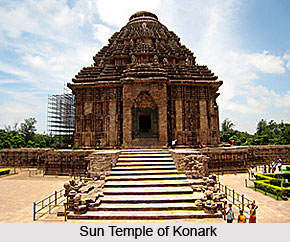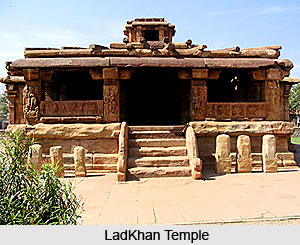 The distinct features of Indian temple architectural style were a result of geographical, climatic, ethnic, racial, historical and linguistic mixture. Ancient Indian temple architecture is classified in three broad types based on their features. Three main styles of temple architecture are the Nagara style Architecture, the Dravida style Architecture and the Vesara or Mixed style.
The distinct features of Indian temple architectural style were a result of geographical, climatic, ethnic, racial, historical and linguistic mixture. Ancient Indian temple architecture is classified in three broad types based on their features. Three main styles of temple architecture are the Nagara style Architecture, the Dravida style Architecture and the Vesara or Mixed style.
Decoration is one of the major parts of Indian temples. It is reflected in the multitude details of figured sculpture as well as in the architectural elements. Garbhagriha or the womb chamber that houses the deity of the temple is another major feature. It was provided with a circumambulation passage around. In the north Indian temples, the sikhara remained the most prominent component. Some of the best examples of the north Indian style of temple architecture are the Khajuraho Group of temples, Sun temple of Konark and Sun temple, Modhera.
 On the other hand, the south Indian temples had their enclosing walls erected throughout the whole complex. Sophisticated and embellished and often outstanding entryways called gopurams were ideally sculpted along the east-west and north-south axes of these walls. These gopuram entryways further led the devotees directly into the sanctified courtyard. The rarest instances of Dravidian fashion include the temples of Tanjore, Madurai, Mahabalipuram, Badami, Pattadakal and Kanchipuram. In Aihole there are temples scattered around the village. The Ladkhan temple is the oldest among them. The Durga Temple is notable for its semi-circular apse, elevated platform and the gallery that encircles the sanctum sanctorum. Other temples include the Konthi temple and the Meguti Jain temple.
On the other hand, the south Indian temples had their enclosing walls erected throughout the whole complex. Sophisticated and embellished and often outstanding entryways called gopurams were ideally sculpted along the east-west and north-south axes of these walls. These gopuram entryways further led the devotees directly into the sanctified courtyard. The rarest instances of Dravidian fashion include the temples of Tanjore, Madurai, Mahabalipuram, Badami, Pattadakal and Kanchipuram. In Aihole there are temples scattered around the village. The Ladkhan temple is the oldest among them. The Durga Temple is notable for its semi-circular apse, elevated platform and the gallery that encircles the sanctum sanctorum. Other temples include the Konthi temple and the Meguti Jain temple.
In Pattadakal there is the Virupaksha temple which is the biggest temple which has carved scenes from the epics of Ramayana and the Mahabharata. The Hoysala temples display a unique architectural style which is distinct from the Dravidian style that prevailed during this period in the neighboring state of Tamil Nadu.
During the rule of the Western Chalukyas many temples were built. For instance the Saraswati temple at Gadag, the Doddabasappa Temple at Dambal and the Amriteshwara temple at Annigeri are some of the temples that were built during that time. It has elaborate pillars with intricate sculpture.
The type of raw materials available in different regions had a significant impact on construction techniques, carving possibilities and the overall temple appearance. The soft soap-stone type material used by the Hoysala architects in the twelfth and thirteenth centuries allowed sculptors to work in the tradition of ivory and sandalwood carving. Hard crystalline rocks like granite prevented detailed carving and resulted in shallow reliefs associated with Pallava temples of the seventh centuries. In areas without stone, temples constructed of brick had quite different characteristics.











